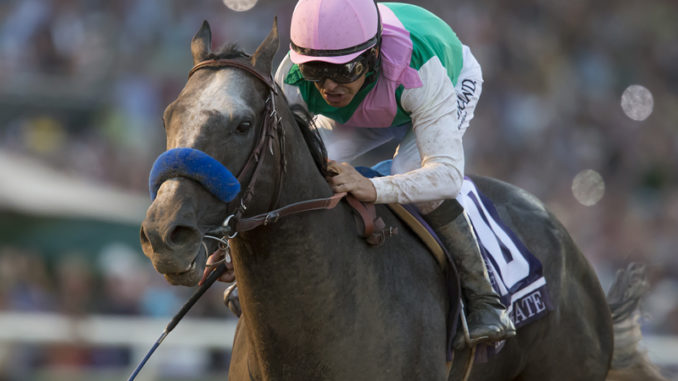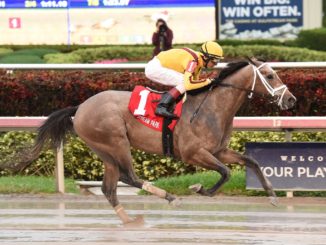
Arrogate appeared unbeatable entering Saturday’s San Diego H. (G2) but similar to the tortoise beating the hare, the fastest runner didn’t win. The unexpected happens in sports, favorites can have an off day, and the 2017 San Diego is now etched in the history books as one of horse racing’s greatest upsets.
“They all get beat” is a common sentiment following surprising losses and for decades, Secretariat has served as Exhibit A. Arguably the best racehorse of modern times, Big Red won back-to-back Horse of the Year titles without compiling a perfect season, performing below par in a trio of surprising setbacks during his 1973 Triple Crown-winning campaign.
That’s no consolation to the bettors who wagered more than $1.3 million to show on Arrogate. What looked like easy money disappeared into a state of disbelief when the gray horse came up empty on the far turn at Del Mar and was protected by Mike Smith in the latter stages, winding up 19 ¾ lengths behind the victorious Accelerate in fourth.
Winning didn’t matter to show bettors and Smith has been criticized for not riding all-out in the stretch, as if the Hall of Fame rider was going to risk his Arrogate’s health for the sake of a meaningless third-place finish. I don’t think Arrogate would’ve been third regardless but that’s not the point. Smith knew something was amiss aboard the world’s top-rated horse and his job is to protect the horse. He didn’t break any rules doing exactly what is expected in a troubling situation.
The San Diego became another example of the risk associated with investing substantial stakes for a minimal return.
Arrogate had reeled off seven straight wins, registering enormous BRIS Speed numbers of 124-115-115 for consecutive tallies in the Travers (G1), Breeders’ Cup Classic (G1) and Pegasus World Cup (G1), and the Bob Baffert-trained colt was exiting a scintillating last-to-first victory in the Dubai World Cup (G1) overseas.
As a result of the successes, his support was overwhelming: Arrogate took 80% of the action in the win pool and 94% of both place and show pools in the San Diego. The 1-20 favorite would’ve paid $2.10 for win, place and show wagers. Some big bettors are willing to purse the lowest possible rate of return in the show pool – 5 cents on the dollar – and are known as “bridge jumpers” because of the possible negative ramifications.
Now, bridge jumpers will tell you it’s a matter of picking your spots. Would you have wagered $100,000 to win $5,000 on the prospect of Jordan Spieth finishing in the top 10 entering Sunday’s final round of the British Open? Or the same proposition on Songbird finishing at least third against four undistinguished rivals in the recent Delaware H. (G1)?
The appeal of a sure-thing can be alluring but the risk is too great over the long-term. Even at 1-10 odds, a bettor might be able to string together seven consecutive winning $100,000 wagers but if one suddenly misses, you’re down $30,000. Nobody could envision Arrogate finishing off the board last Saturday.
It was stunning to see him come up so empty, but Arrogate emerged unscathed and is eligible to rebound next time.




If it was Hong Kong or Australia he better look like riding hard to the wire or be looking at 6 mos. vacation.
I was at the track, Arogate looked like a sleek panther the day they had him out walking the paddock. But on race day he seemed distracted, like he already had vanquished the very mortal foes in the race.
I bet $500 to place and show on Arrogate, who looked sharp, and cashed bigtime. It was, I thought almost a zero risk play, compared to the bridge jumpers Million across for .05 payback. I am still laughing at the chalk eaters , and will always get a chuckle from this. Arrogate will dominate the Breeders Cup, of that I am sure. But not at 1/20!